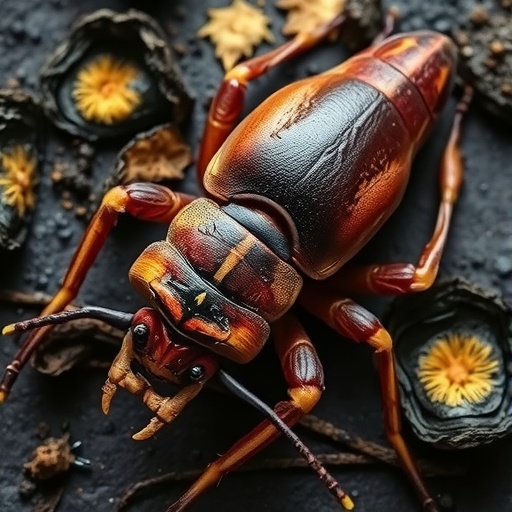Credit: Walter and Eliza Hall Institute, Australia
Walter and Eliza Hall Institute researchers have visualised for the first time how the protein SOCS1 'switches off' cell signalling to dampen immune responses and block cancer growth.
The atomic-level structure of SOCS1 binding to its partner protein JAK could guide the development of drugs that alter disease-causing cell signalling pathways, and may have applications for treating some blood cancers, including leukaemias.
The research, led by Dr Nick Liau, Dr Nadia Kershaw, Associate Professor Jeff Babon and Professor Nick Nicola, was published in the journal Nature Communications.
AT A GLANCE
- – The SOCS1 protein binds to JAK proteins to 'switch off' cell signalling, which dampens processes including immune responses and cancer growth.
– Our researchers have used structural biology to visualise how SOCS1 binds to JAK proteins in never-before seen detail.
– The detailed structure may guide the development of new drugs that modify JAK activity, amplifying or dampening cell responses, with potential applications in cancer therapies.
SWITCHING OFF SIGNALLING
Dr Liau said the structure of the protein pair revealed for the first time how SOCS1 binds to JAK proteins to disable signalling.
"Using the Australian Synchrotron and the CSIRO Collaborative Crystallisation Centre, we produced an incredibly detailed view of how SOCS1 interacts with the JAK1 protein," Dr Liau said.
"With this image, we were able to explain for the first time why JAK proteins cannot signal when bound to SOCS1. This information could help to underpin the development of new medicine targeting this important cell signalling pathway."
A BLUEPRINT FOR NEW MEDICINES
Dr Kershaw said both SOCS1 and JAK proteins had been implicated in driving diseases including cancer and inflammatory conditions.
"In particular, overactive JAK signalling is linked to the development of cancer-like conditions called myeloproliferative neoplasms (MPNs) – which include polycythemia vera, essential thrombocythemia and primary myelofibrosis – as well as certain acute childhood leukaemias.
"Medicines that inhibit JAK signalling are in use for treating MPNs, but they are only able to manage the disease, not cure it. New medicines for these conditions are needed, and we envisage that a drug designed to mimic the SOCS1 protein to switch off JAK proteins might be a more effective treatment," Dr Kershaw said.
As well as guiding the development of drugs mimicking SOCS1, the team's research may also underpin the development of a second new class of drugs that inhibit SOCS1, Associate Professor Jeff Babon said. "SOCS1 binding JAK proteins normally applies a 'brake' to immune responses – which in a healthy person is a good thing," he said.
"However, in certain conditions, releasing this brake could be the key to enhanced immune responses. This approach to boosting the immune response could be the key to improving immunotherapies for treating cancer. If we could design a drug that inhibits SOCS1, this might boost anti-cancer immune responses, potentially improving anti-cancer immunotherapies."
###
Dr Liau is a former PhD student at the Institute, enrolled through the University of Melbourne's Department of Medical Biology. The research was supported by Cancer Council Victoria, National Health and Medical Research Council and the Victorian Government.
Media Contact
Vanessa S Solomon
[email protected]
61-431-766-715
@WEHI_research
Original Source
https://www.wehi.edu.au/news/structure-protein-pair-provides-blueprint-future-drugs http://dx.doi.org/10.1038/s41467-018-04013-1




